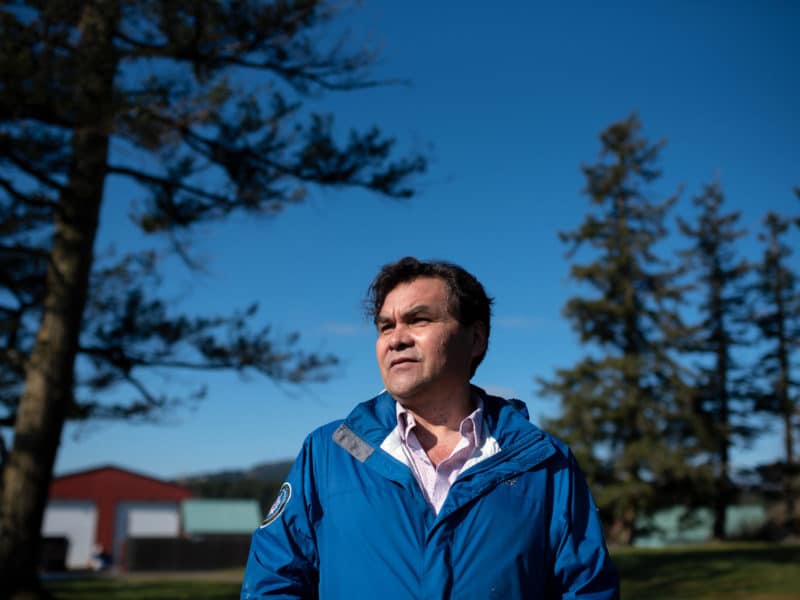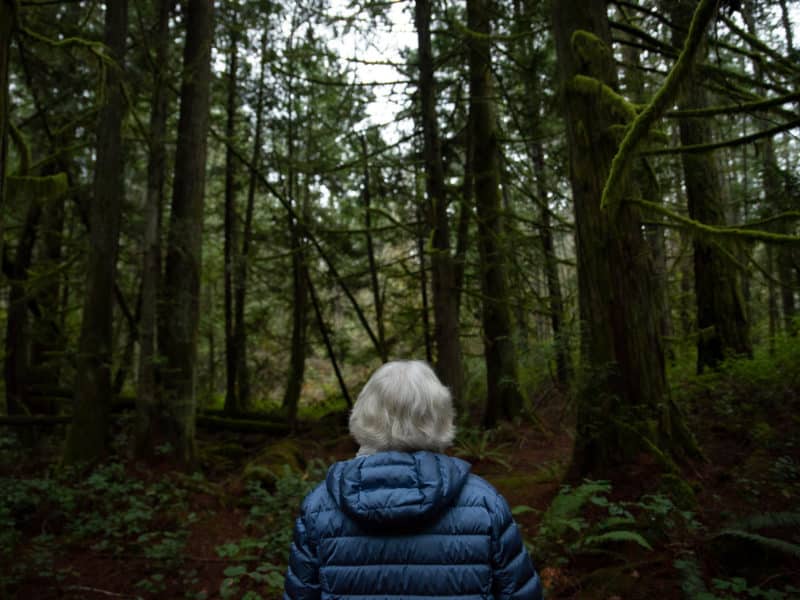
Tucked away at the back of Edward Milne Community School’s field is a hidden gem. A 2,500-square-foot space seems unassuming from far away but as you approach it, the magic begins to appear. It’s the school’s garden which, for the first time, is hosting a group of students for a summer work experience program.
Squash blossoms, berries, apples and more can be found in the garden beds while other vegetables like tomatoes and cucumbers are thriving inside a greenhouse. A whiteboard listing things that need to be done — weeding around the fruit trees, watering everything not on irrigation, harvesting herbs — leans against the garden shed and the students are hard at work with smiles on their faces.
In front of the school is the second part of this operation — the farm stand. Two more students are posted there greeting community members and selling their bounty as well as seeds.
Educational opportunities are in abundance in this garden year-round, and more gardens like it have been or are being developed in other Sooke School District high schools.
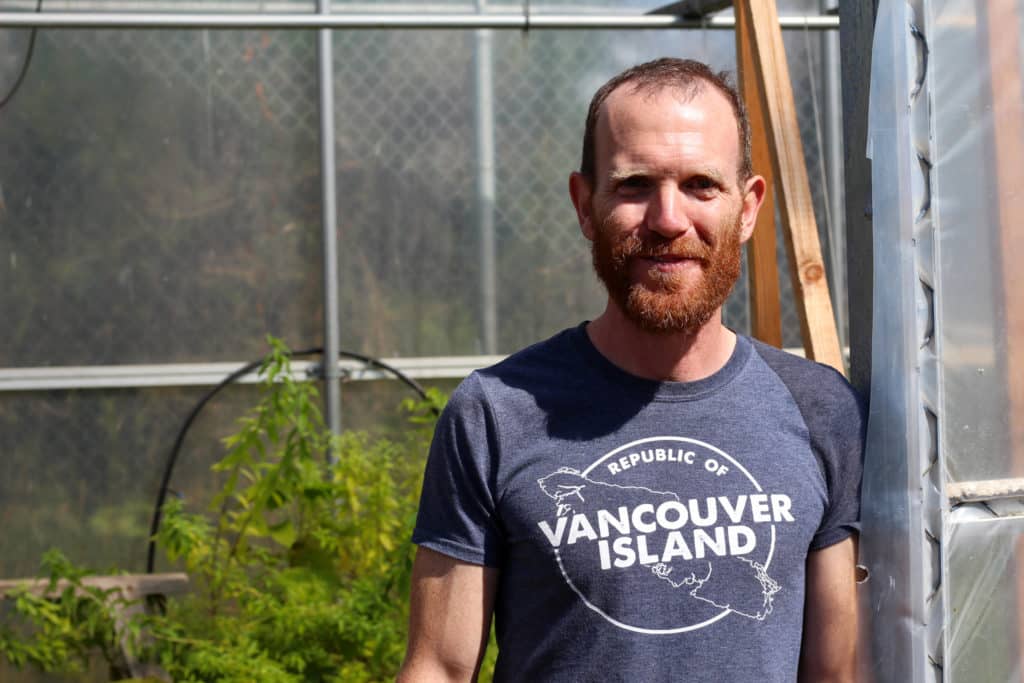
Matthew Kemshaw is the garden coordinator with the Edward Milne Community School Society, an organization that works closely with the school district and offers programming for students throughout the year. He works at EMCS, Belmont Secondary, Royal Bay Secondary and the Westshore Centre for Learning & Training. Each school’s garden varies in size — with one currently being built at the newer Royal Bay school — but Kemshaw says they’re all valuable to have.
“It’s an educational space first, but one of my main goals is to turn these into productive spaces too,” Kemshaw says. “So they’re not just demonstration gardens, but productive microfarms to provide food for the schools.”
Related story: Little Zimbabwe Farm offers a cultural exchange through food and music
Opportunities to learn and grow
Sophia Abel-Heath just graduated from Edward Milne Community School and secured a job as a garden assistant for the summer. She was introduced to the garden and what it has to offer during her last year of school as part of a class about sustainability.
Abel-Heath has always been interested in gardening so she asked to volunteer in the school’s garden for the summer and was pointed towards a job opportunity instead. She’ll be studying earth and ocean sciences at the University of Victoria next year and says being in the garden and working with the environment has her excited for her future.

“Through being here my excitement to learn about the earth and how everything works has grown,” she says. “I think that’ll be really important for keeping me going during my studies.”
The garden serves as a learning opportunity for several school classes, Kemshaw says. While the obvious ones are science and food classes, he says art students have drawn inspiration from the garden, and French classes are looking to practice conversing in the garden, too.
Related story: This group is tackling food insecurity one urban garden at a time
He says students also have the opportunity to engage with food and learn where it comes from.
“It’s great for them to make tangible, hands-on connections to seeds, soil and plants and see what it takes to produce food,” Kemshaw says. “It’s providing an educational opportunity for students to connect with food and learn about food systems, problems and challenges with industrial food systems and possible solutions on a local scale.”
The gardens are also able to provide culinary classes — which make hundreds of meals a week for staff and students — with super-local, high-quality food.

Abel-Heath says being in the garden has taught her how much work goes into growing food and how different environmental impacts can be with large-scale monocropping operations compared to smaller-scale, diverse farming.
“I think it’s really important to become aware and get involved with growing your own food because food security is becoming a problem and the more we learn the more we can support ourselves if we need to,” Abel-Heath says.
Improving students’ mental health
Being outside and away from a classroom environment, even just for 20 minutes a day, seems to impact students’ mental health and focus, too, Kemshaw says.
“A lot of students are suffering from anxiety and there’s a growing concern about students’ mental health and these gardens provide a nice sanctuary for them,” he says. “I hear teachers talking about how students go back into the classroom after a garden visit and are much more focused and engaged. They’re just happier and healthier people.”
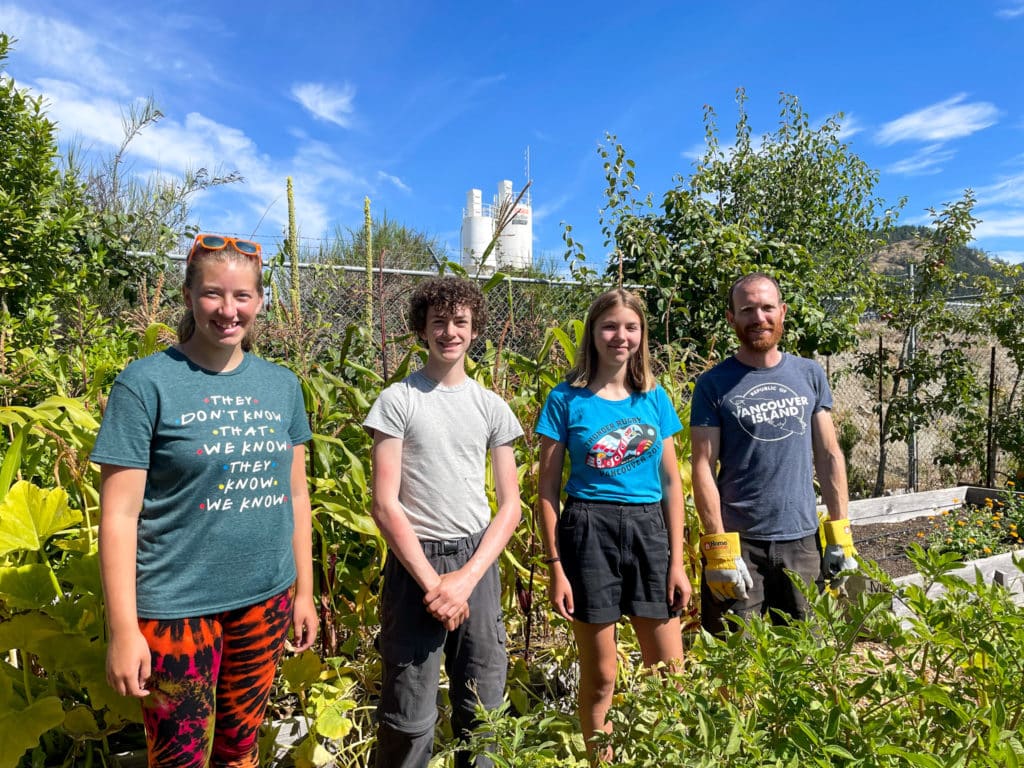
Having a chance to get away from her desk is what Abel-Heath says she enjoyed about the garden as well. She says it was a “nice contrast” to sitting at a desk and doing school-work inside.
According to the Canadian Mental Health Association, being in green spaces can significantly reduce stress and raise endorphin and dopamine levels, which can lead to feelings of happiness.
“Whether you’re in your own yard, or at a community garden, simply taking care of your plants and connecting with nature can help calm your mind and get your body moving,” the Canadian Mental Health Association says, citing a 2007 study on community gardening in Toronto.
Career opportunities flourish
Participating in the summer work program in the garden can point students to different career paths as well, Kemshaw says.
This is the first year the program has run in SD62 and it’s modelled after a similar program in the Greater Victoria School District called Seed the City. There’s a small group of students in the Sooke School District program this year, but Kemshaw says it’s been great for them to work together and grow as a team.
They also gain tangible skills outside of gardening. Students learn about marketing and selling food, connecting with community members, teamwork and more. And the community seems very supportive of it too, Kemshaw says.
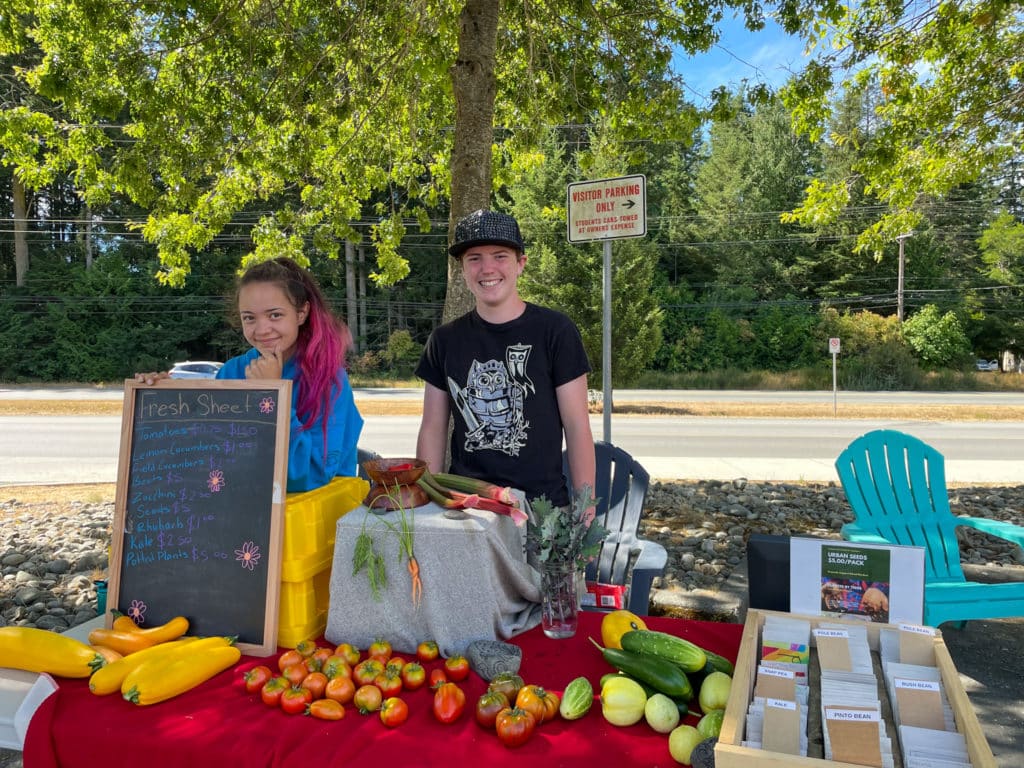
“There’s a lot of positive engagement with what we’re doing,” Kemshaw says. “When we post things on social media it gets a big response. I think people just really like to see that students are learning something tangible and real.”
The students in the program go on field trips to local farms too, which can help them start thinking about whether or not agriculture is something they’re interested in as a career path. Working in the garden could inspire the next young generation of farmers, something Kemshaw says is needed in the agriculture industry.
“We need smart young people to innovate in our food sector if we’re going to try to overcome the challenges of climate change,” Kemshaw says. “We need a new way of growing food and we need innovative young people to engage in that work. We need more young people getting excited about trying to overcome these challenges.” [end]

